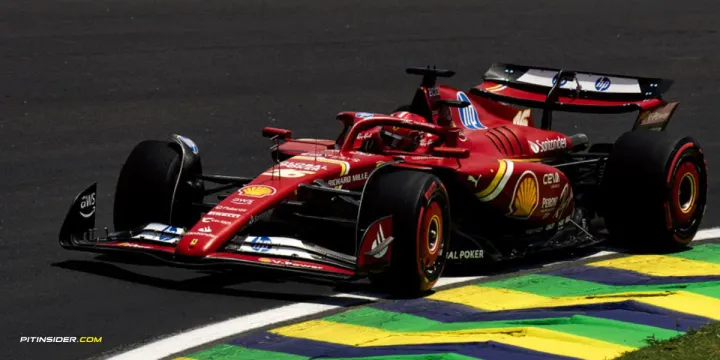Leclerc calls for F1 to find downforce/weight balance for 2026
Charles Leclerc hopes F1 can strike the right compromise between lighter cars and strong downforce under the 2026 regulations. He doesn't want to lose the impressive grip of modern F1

As Formula 1 prepares for sweeping technical changes in 2026, Ferrari's Charles Leclerc has provided his perspective on striking the right balance between improved sustainability and retaining the spectacle of modern F1 cars.
The lighter cars the better
Leclerc harked back to F1's past as he lamented the hefty weight of contemporary cars.
"I drove a 2003 car in Abu Dhabi with 50 kilos of fuel, but you can definitely feel the difference with today's car," he recalled.
The Monegasque driver was clear on his preference, stating: "I don't like heavy cars. I think for the agility of the car and for also the low-speed corners, now you can really feel the weight."

Yet Leclerc argued downforce should not be sacrificied if it means returning to the low-grip era of previous generations.
"I have to say that what we are experiencing in medium to high speed with the downforce we have today is incredible compared to 12 or 13 years ago, and this is very impressive," he asserted.
The complex path to sustainability
Efforts to cut emissions will inevitably add weight in 2026. But Leclerc warned sustainability goals should not be pursued at the expense of on-track spectacle.
"I wouldn't want to go higher than the weight we have now, that's for sure. But also going very light compromises also the aero that we have because the car is huge, and that produces also a lot more aero compared to 12 years ago," he analyzed.

An unpredictable learning curve
Leclerc admitted feeling initially unsettled by the unpredictability of 2022's ground-effect machines.
"These cars are also a lot more sensitive to all the changes you do, and you can go from very good to very bad, with a very small change. So, this makes things a bit more unpredictable," he said.
Yet the Scuderia talent expects rapid gains as teams dissect the nuances of refreshed regulations over time.





Comments ()